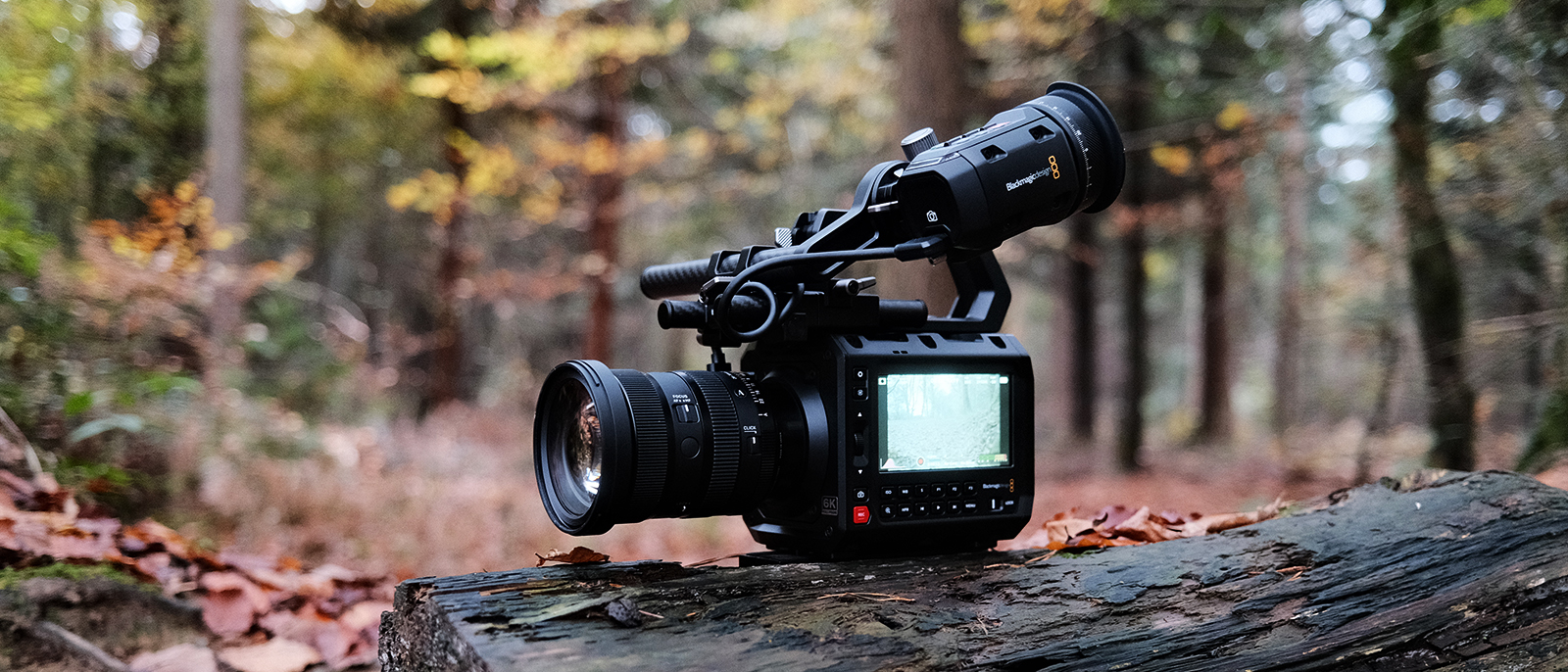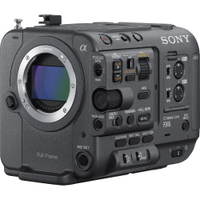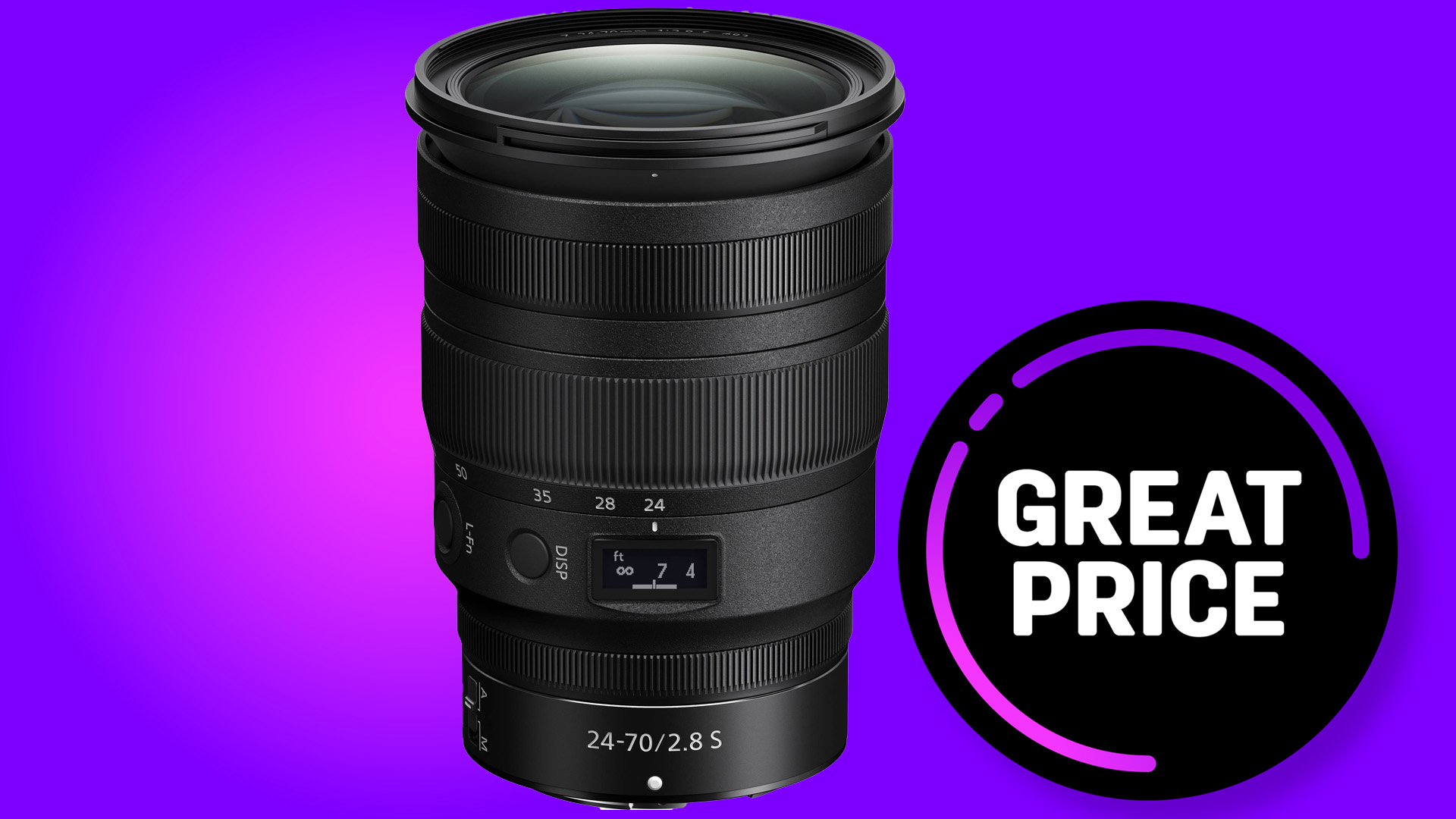Digital Camera World Verdict
The Pyxis packs a lot of punch for its relatively low cost, with a robust build, good set of IO and it shoots in the wonderful BRAW codec. It needs the typical cinema camera rigging and accessories to work at its best but produces beautiful imagery.
Pros
- +
Form factor adaptable for different shooting situations
- +
Excellent image quality
- +
Support for all anamorphic de-squeeze ratios
- +
Best in class menu system
Cons
- -
Maximum of 4 product cons. As short as possible while still making sense.
- -
Only a single XLR port
- -
Needs additional gear out of the box
Why you can trust Digital Camera World
Blackmagic Design’s Pyxis is the result of substantial customer feedback. The hugely popular Pocket Cinema camera range did so much so well but the form factor left a lot to be desired for many, me included leading to forums and user groups being filled by a vocal many demanding a box-style camera with Blackmagic image quality and at an affordable price.
NAB 2024 saw Blackmagic announce a number of new products, including their first box-style camera, the Pyxis. Amid huge amounts of excitement, there was also a fair bit of disappointment. Things like a non-articulating screen and lack of internal NDs are high on the list, but are those things really a negative? More on that later.
Blackmagic has delivered a true box-style camera, at under three thousand dollars but does it satisfy the needs of the modern shooter and if so which shooters will get the most for their money, as not all shoots have the same requirements, and where would it sit in one of our best camera guides? The most important question you have to ask yourself when buying this, or any camera is, what are your shooting needs? Are you a documentary filmmaker, or do you produce narrative work or commercials? This will inform your requirements and you can disregard what anybody else might need and make your choice based on what best serves your needs.
Blackmagic Pyxis: Specifications
| Effective Sensor Size | 36mm x 24mm (Full Frame) |
| Lens Mount | L-Mount |
| Lens Control | Iris and focus on supported lenses |
| Dynamic Range | 13 Stops |
| Dual Native ISO | 400 and 3200 |
| Shooting Resolutions | 6048 x 4032 (Open Gate 3:2) up to 36 fps4832 x 4032 (Anamorphic 6:5) up to 36 fps6048 x 3408 (6K 16:9) up to 46 fps6048 x 3200 (6K DCI 17:9) up to 48 fps6048 x 2520 (6K 2.4:1) up to 60 fps4096 x 3072 (Super 35 4:3) up to 50 fps4096 x 2304 (4K 16:9) up to 60 fps4096 x 2160 (4K DCI 17:9) up to 60 fps2112 x 1184 (Super 16 16:9) up to 100 fps1920 x 1080 (1080 HD 16:9) up to 120 fps |
| Total Video Outputs | 1 x 12G-SDI up to 2160p601 x Viewfinder USB-C with power, data, video and locking connector |
| Analog Audio Inputs | 1 x mini XLR analog audio in, switchable between mic with phantom power support and line level (up to +14dBu).1 x 3.5mm Stereo Input |
| Analog Audio Outputs | 1 x 3.5mm headphone jack |
| Reference Inputs | Tri-Sync/Black Burst and Timecode |
| Computer Interface | USB Type-C for external drive recording, PTP camera control and software updates |
| Ethernet | 1 x 1Gb/s RJ‑45 connector supporting 10/100/1000 BASE-T |
Blackmagic Pyxis: Price
At $2,995 / £2,814 / AU$4,905 for the L mount or EF mount and $3,195 / £3,094 for the PL mount. You’d be hard-pressed to find a box-style cinema camera new, with the capabilities of the Pyxis at this price, even on the used market. For example, the Komodo X is $6,995 / £4,680 / AU$11,995 and the FX6 from Sony is $5,999 / £5,399 / AU$9,599.
Blackmagic Pyxis: Design & Handling
Build
If you’ve ever used one of Blackmagic’s Ursa mini cameras you’ll feel the Pyxis is very familiar but if you’re coming from the Pocket range you will notice a huge leap in terms of build quality and the associated increase in confidence that comes with it. The Pyxis has a metal body that feels solid. Everything is well-machined and finished and is surprisingly massy for a body of this size. In comparison, it’s around a third of the volume of an ursa mini but is reassuringly weighty, though no brick.
The top and bottom faces are home to a number of ¼” and ⅜” mounting points, some with Arri locator pins. One side is the operator side, where the buttons and screen live. The buttons feel fine. They work well and you always know when you’ve pressed one, so little chance of missing anything. There is one scroll wheel, for changing settings, where a little more finesse is needed than is offered by the touch screen (if you have big fingers like me). There is also a lock button, to deactivate the operator side, which is handy but it does also lock the record button. I’d like to see a menu option that leaves the record usable. Not a big deal when using Blackmagic’s EVF or soon-to-ship monitor, as they both have camera control which isn’t locked when the lock switch is active.
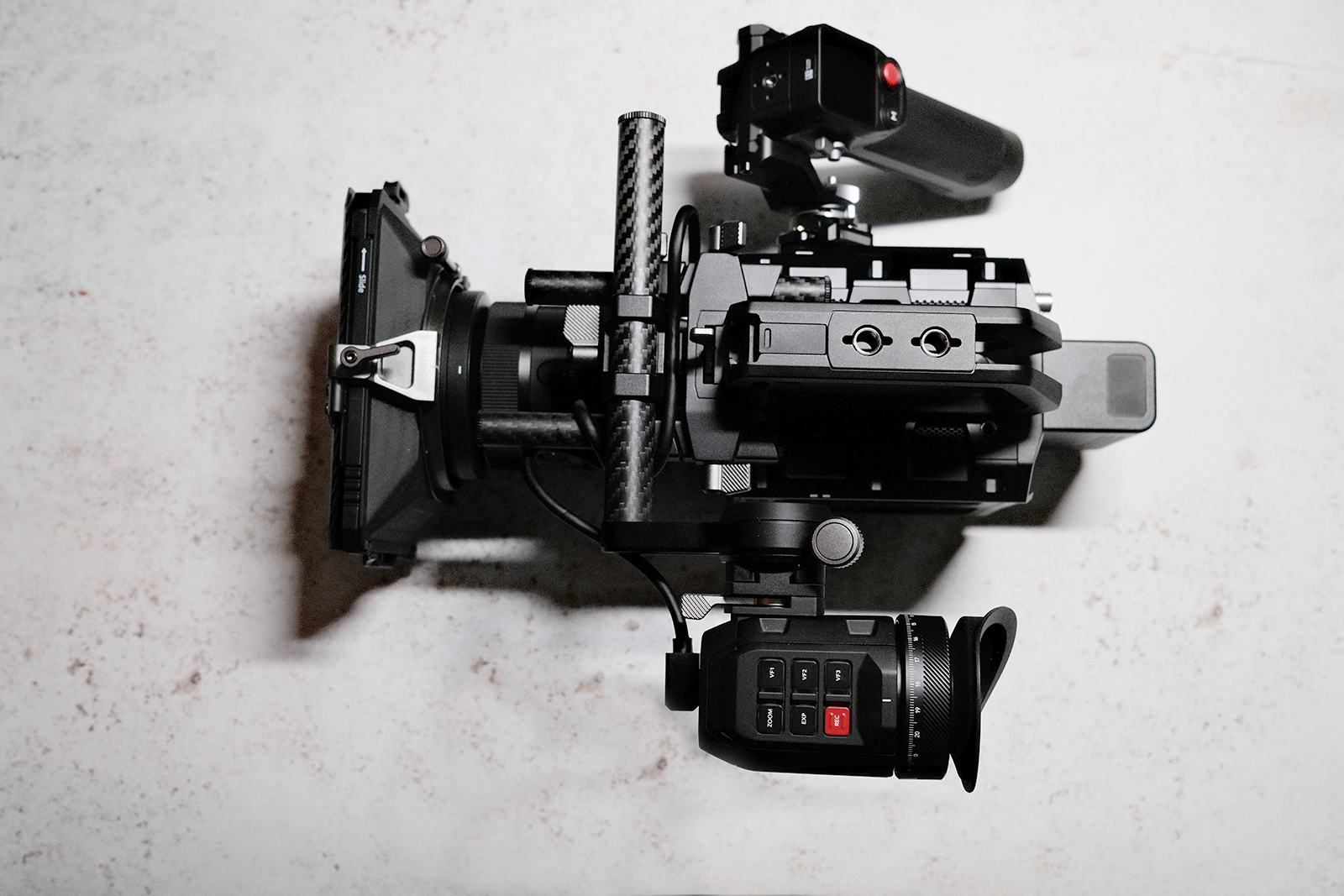
Let's talk about that screen. It’s a 1500 nit 4” screen which is HDR and clearly visible in even bright sunlight. A swipe down hides all the on-screen data, so you can focus on the image but for an operator's monitor, it covers everything, from shutter angle and iris to histogram, focus peaking and battery life, media storage stats, and much more. It’s a good quality touch screen too, making interacting with the camera easy and stress-free. You can load LUTs into the pyxis too, making it much easier to get an idea of a finished shot..
Now, a lot has been said about the screen and a lot of this has been negativity around the placement, or lack of articulation. While it would have been nice to see articulation it is by no means necessary. This camera is built to be rigged, using an EVF or a field monitor for critical focus and framing. Adding hinges and the extra materials needed to make a moving screen as tough as the rest of the camera may have been possible but it would undoubtedly have led to a significant increase in cost. I’d suggest looking at other box cameras to see what they offer. You may see them with screens located in other places which may suit your shooting needs more but none of them are as big, bright, or interactive as this one. For people naysaying the Pyxis on this basis, I think they are either missing the point of the camera. At the end of the day, this is a cinema camera, designed as such and the form factor here suits that perfectly. It’s a plus that you can actually frame shots, focus, and expose using the built-in screen.
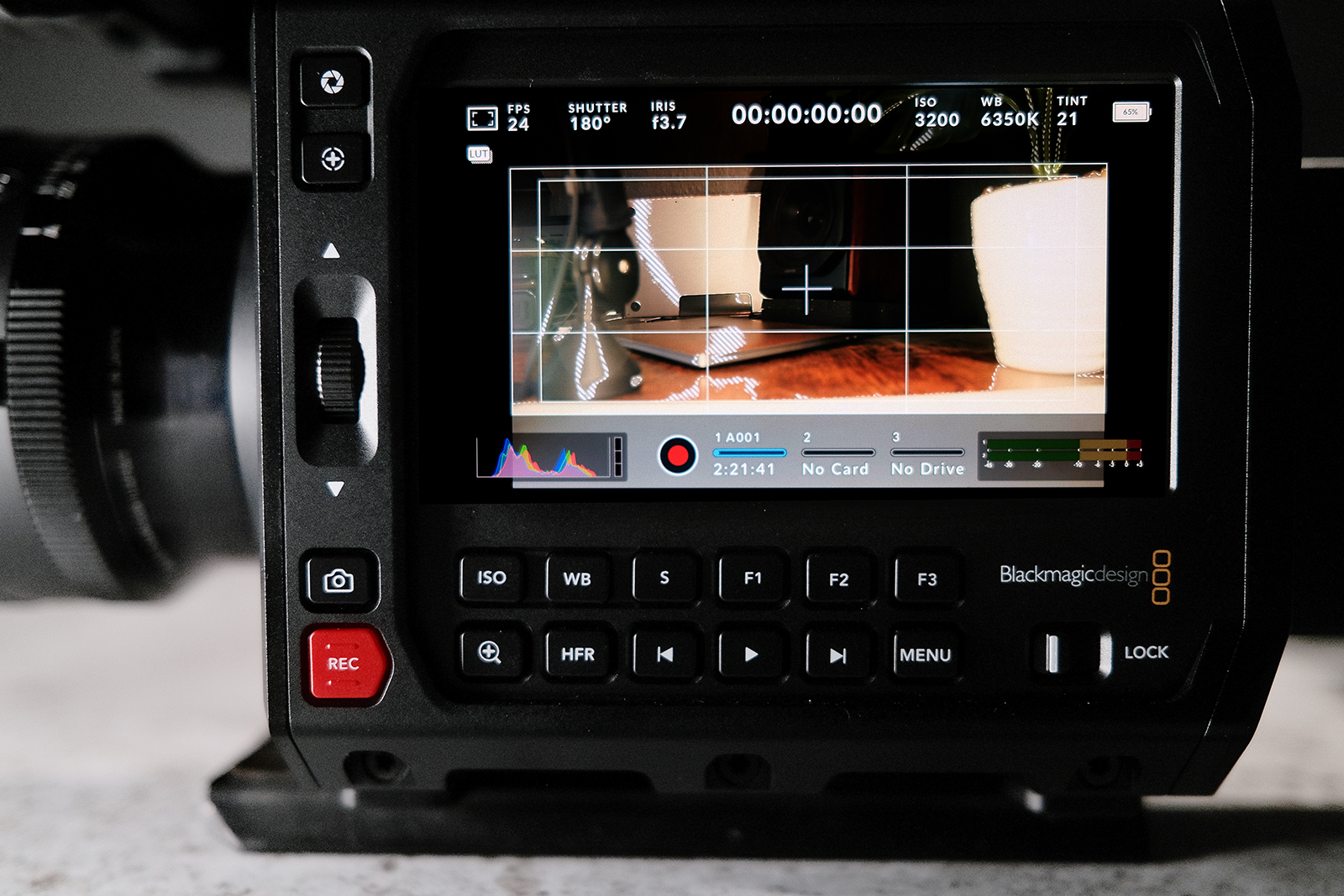
Another reason this screen is just right is for the menu system. Blackmagic has the single best menu system out there. It’s crisp, clean and intuitive. Certain other manufacturers could learn a thing or two from this GUI. It’s easy to find the item you are looking for and equally simple to make adjustments. I particularly like the way it handles separate settings for what gets displayed on accessories such as the EVF, or via SDI. Very neat, unbloated, and easy to view in all lighting conditions.
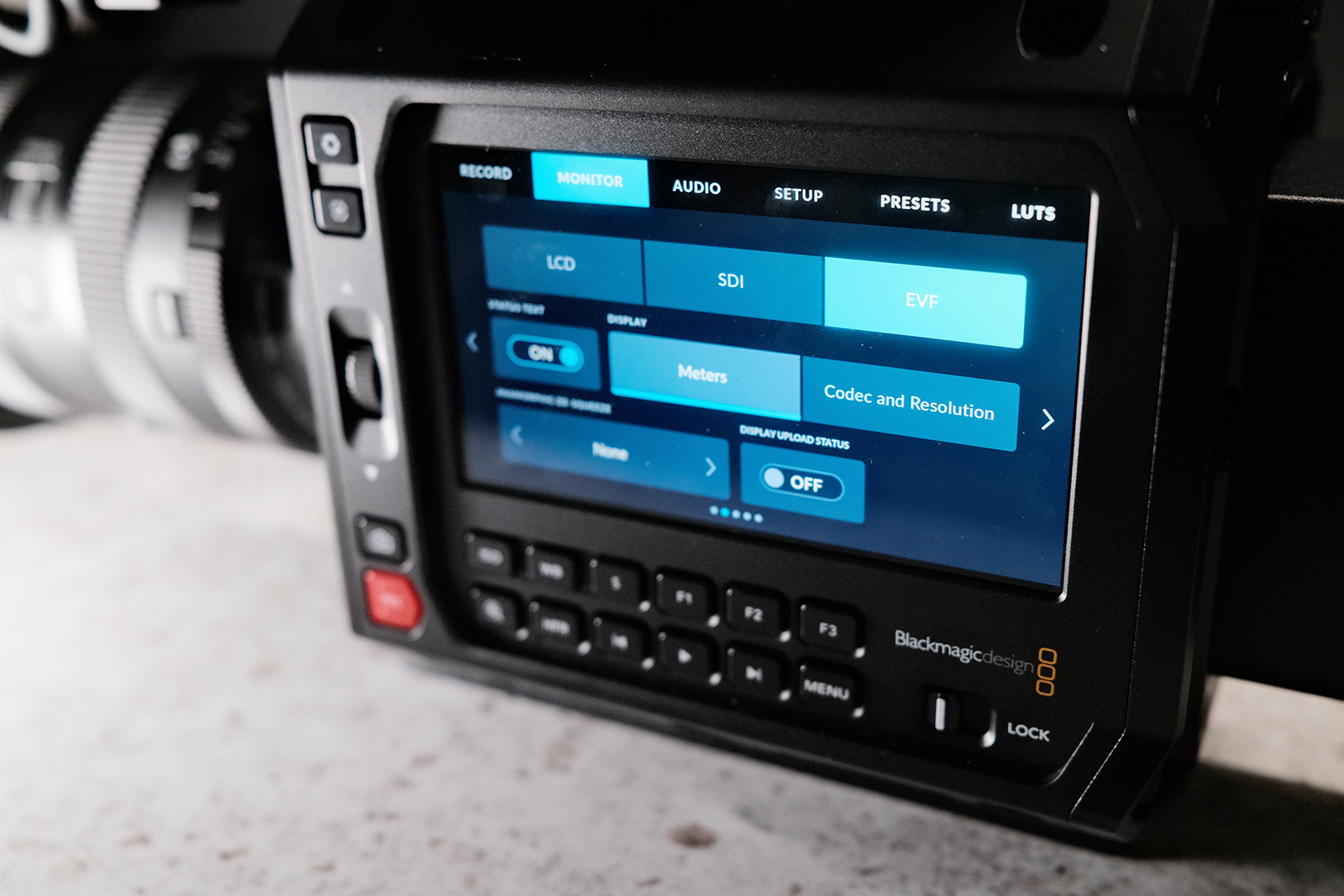
Handling
Handling is key to the success of any camera. It doesn’t matter how good the image is, if you struggle to use it it’s most likely you’ll look for a different solution. This is where the box style really shines. While it is true that it’s cumbersome out of the box, you can rig it in so many ways there will always be a way to get the most out of it. You may only ever use it for one use case, or you could have multiple different shooting styles. No matter what, there’s a rig. That said, keep in mind this is a new camera, so cages and rigging options are still in development but when the likes of Tilta and Smallrig ship their inevitable options you will be spoiled for choice.
With nothing attached but a lens, the Pyxis is ideal for gimbal use. The center of gravity, even with a lens attached makes for easy balancing and the fact that you’ll be using a separate monitor plays into this too, as it can be mounted to the gimbal, rather than the camera.
For handheld work, you’ll have a number of options, especially if you go for the extra rosette side plate that offers a bunch of ¼” and ⅜” threaded holes, as well as the rosette. Adding side handles, mounting wireless transmitters, or timecode boxes are all easy this way. For small and light I use an old rosette handle from an Ursa mini shoulder mount, which works well, although the camera controls don’t work, as the Pyxis has no lanc port.
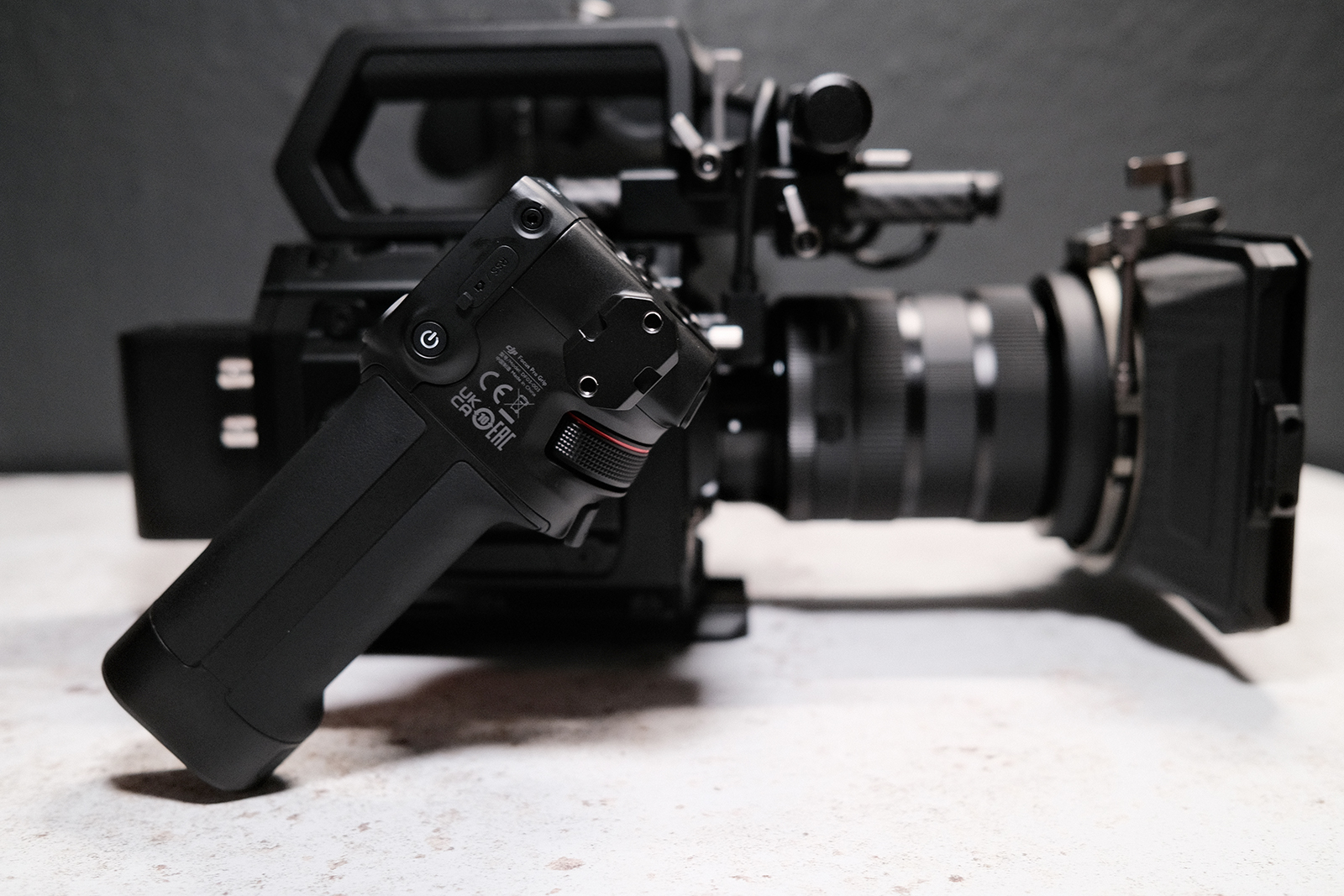
A top handle is a must for most and again, the Pyxis makes this easy with threaded holes on the top. I have a bunch of these but prefer Blackmagic’s own, as it works elegantly with their EVF, which I’ve really enjoyed using. If you have a favorite, then adding a nato rail or similar up top will do the job for you. There are so many rigging options it’s hard to name-drop many, so I’ll stick with Blackmagic’s for now. The EVF kit comes with top-mounted rods that extend just far forward enough to mount a follow focus. This is where I found my ideal setup, using the DJI focus pro handle, mounted to the rosette plate and the motor fixed to those rails. This will be easy to swap to a top-mounted monitor and back when needed.
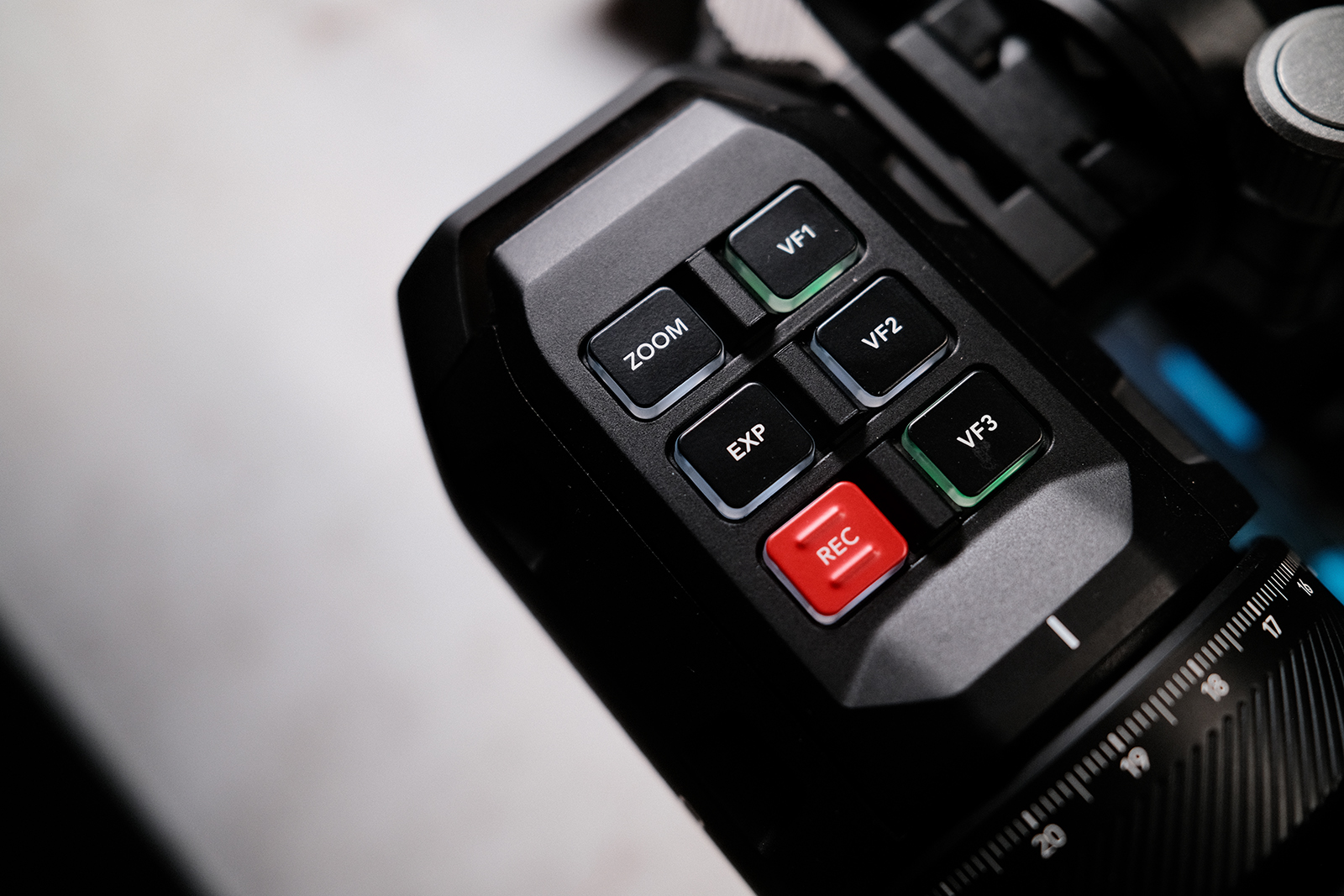
For mounting to other supports there are a number of threaded holes on the bottom of the Pyxis too, so adding base plates and quick-release plates is pretty simple too. There are four little rubberized feet, which could potentially interfere with larger base plates but in all likelihood, this isn’t going to be a problem.
So, all in all, the Pyxis is a bit of a brick out of the box, but for all the right reasons. It has excellent rigging possibilities, making it ideal for documentary to narrative work. It’s also small and light enough to be easily squeezed into small spaces, or rigged on a car mount. As for the screen, I have no problem with it at all. Pretty much every rig calls for an external monitor and the Pyxis is no different and there are options at a range of budgets, all of which can be attached in various ways. The side screen can be used for critical focus and composition at a pinch but really, should be treated as a fantastic way to interact with menus.
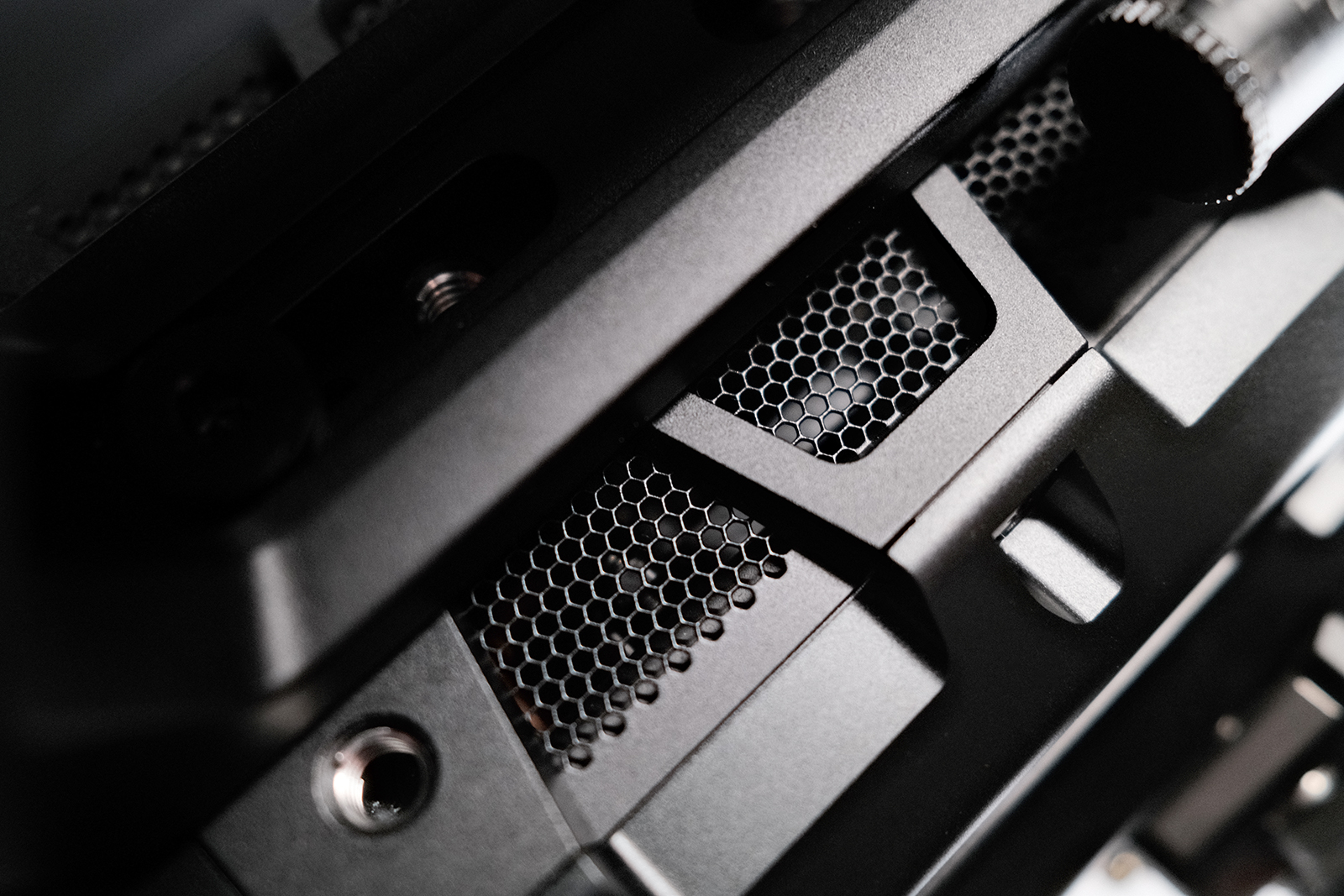
Power
This is the first of Blackmagic’s cameras to be powered by BPU batteries and I have to applaud them for this choice. They offer good longevity and are available in a number of capacities, some even with USB-C or D-tap connections for powering accessories.
Some users will prefer to power a rig with a V mount or similar and this can be done. There are already adapters available for the BPU port, as well as simply connecting to the 2pin 12V power inlet. Either method works well.
A note on this: if you stay within the Blackmagic ecosystem for monitor or EVF then you will enjoy less setup and cable clutter as both are powered from the body. I had thought this was the only way but if you already have other gear there may be a suitable workaround for you. The front USB-C port can supply video to an external monitor (you may need a USB-C to HDMI adapter and the rear USB-C port can supply power. If you have USB-C powered accessories this could be worth considering.
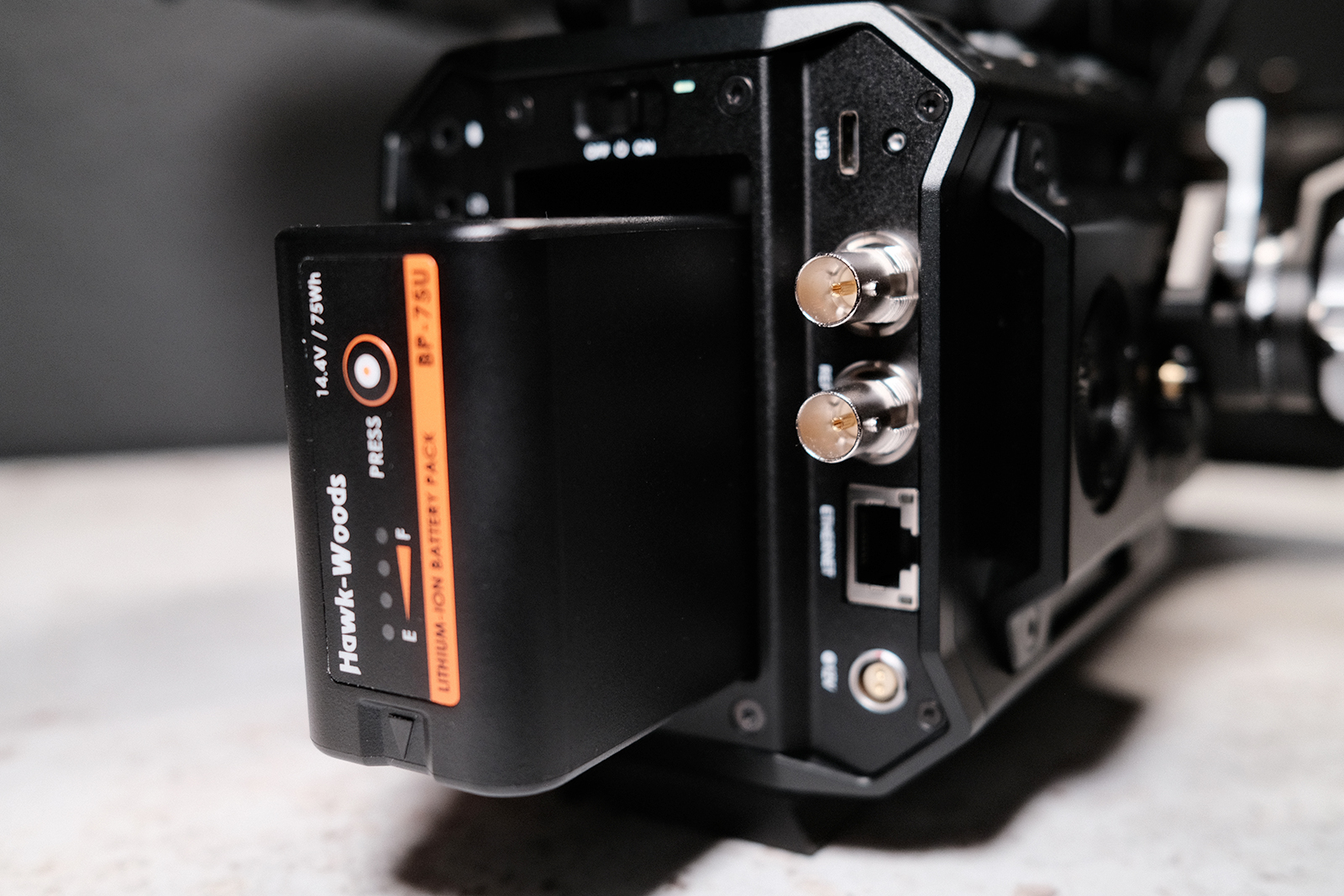
Media
The Pyxis can save footage in a variety of ways, again giving choice to the shooter, something this camera seems to be all about. There are dual CFExpress 2.0 type B slots, accessed on the rear of the body. These sit behind a rubberized door, much like the pocket cinema cameras and this is the only place I’d really like to see an improvement in build. The doors function fine but can be a hassle to open and hold out of the way to get to the card slots. They are far better than the pocket camera covers but a simple metal hinged door would be good.
As well as the CFExpress slots, which do make for a tidy option and possibly the most secure, you can also save to an external SSD. I used both methods with the same results, although you need to check on the Blackmagic site to ensure your SSD of choice is compatible. The Pyxis can be set to either display a warning or stop recording if there are any missed frames, which is handy but not foolproof. I’d like to see an SSD caddy similar to the Ursa mini one although I’m not sure how that would be integrated, with the number of ports on the rear of the Pyxis.
Another option exists, kind of, which is really interesting and that is Blackmagic Cloud. You still need to record locally for full-resolution RAW files but you can link your Pyxis to the cloud, sending low-resolution proxies for an editor to get started with, and syncing automatically in Resolve as you transfer the high-resolution media. This could be game-changing for larger productions, where turnaround speed matters but is also really handy for simply generating proxies on the fly for one-person shooting. The Pyxis even comes with a side plate that has velcro straps to hold a phone in place for cloud or streaming access.
While I didn’t try any multi-camera tests the support is there for this too, where Resolve sets up a multicam project for you. Interesting times.
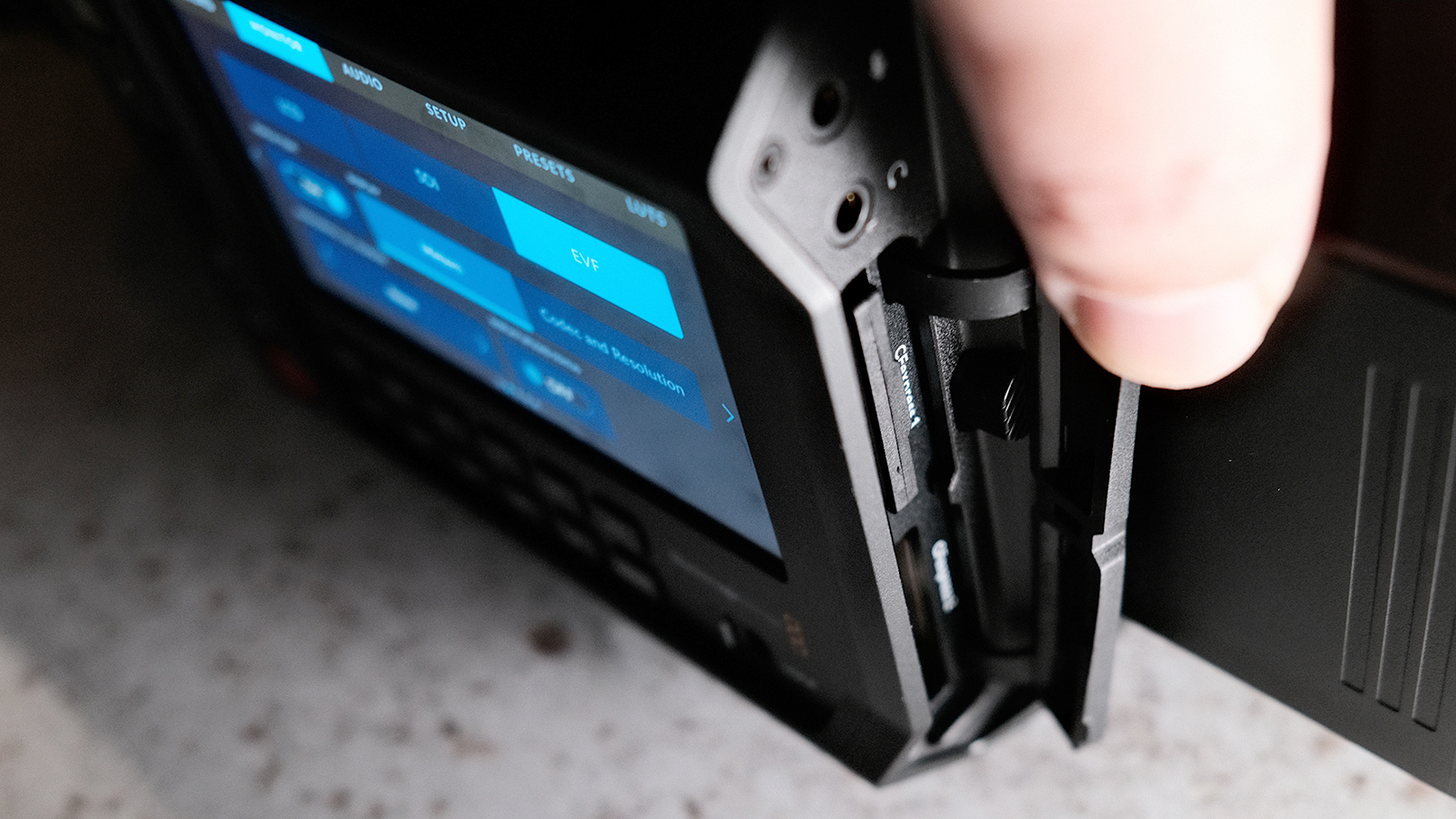
Codecs
So, what about codecs? A few people may miss the Prores options but for most, the BRAW codec will be just right. It’s a fantastic codec, with multiple compression settings, either for constant bitrate, where you can manage file sizes easily, or for constant quality, meaning your output always looks as you expect. In use the results look very similar, so choose what suits your needs most.
BRAW in the Pyxis, with Blackmagic’s gen 5 color science, offers so much flexibility for color management and grading, along with fantastic highlight recovery and post-noise reduction (none is applied in camera). Grading is a topic for a different article, so I’ll leave it here but know the Pyxis image is beautiful and easy to work with. If you are concerned by file sizes it’s handy to know that even the higher compression setting still produces excellent quality and great latitude for post work. See the images below, shot at the highest and lowest compression settings, with everything else left the same.
While there may only be the option for BRAW as a codec, within that there are a multitude of options for resolution and frame rates, from Full HD to 6K. There are some limitations to frame rates at certain resolutions but nothing was missing that I found problematic. If you want to shoot 60fps the highest resolution is going to be 2.4:1 6048 x 2520, so no 60fps at the sensor's maximum 6048 x 4032 3:2 open gate and that’s a trade-off I’m more than happy to make for the open gate. Being able to take advantage of that vertical resolution is worth it to me, either for the reframing options in post or for better anamorphic results, something I use a lot. When it comes to anamorphic the Pyxis covers all the bases for desqueezing too, with everything from 1.3:1 to 2:1, so no matter your choice of glass you will be fine.
Back to frame rates, if you want super fast you can shoot 120 in Full HD but this does crop the sensor, rather than sampling it. This may not suit you or your lens choices in some cases, so keep that in mind if it’s high up your list of requirements. Personally I don’t mind and can be beneficial if you have non-full frame glass you like to work with, as it will crop out vignetting.
Blackmagic Pyxis: Performance
The Pyxis boots in just a few seconds, which I love, as other cameras' start-up times can feel like an age. That, combined with the ability to save presets for your settings may only save short amounts of time but over the course of a shoot all adds up and the whole experience feels fast and fluid.
Much is said and claimed about dynamic range, with various manufacturers using different measures to publish results. Blackmagic has always seemed a little conservative on paper but that feels more like honesty to me. It’s true that the Pyxis is no 17-stop beast but what you get from the 13-stop here is plenty. The footage is beautiful and detailed. Yes, it may need some tweaking in post to really shine but you get Resolve Studio in the box, so there is no worry there. Highlight recovery and noise reduction are simple to implement and do a fantastic job. Some post work is necessary with any camera, so I don’t see this as a downside at all.
I was worried about readout speed from the sensor, as rolling shutter is something that has plagued other cameras but the Pyxis is kind of average as shot but can be fixed almost fully using the Gyro data and Resolve. It’s very easy to do and works remarkably well, in most situations.
On paper, it doesn’t seem like the Pyxis would be much of a low-light camera but my experience is that it’s not bad at all. It’s not top-of-class in this area but performs well with just a little illumination. Sony often gets a lot of credit for its low-light capabilities, for good reason. There is more to the story than that though, as some cameras handle noise reduction in camera. The Pyxis doesn’t, so you will need to enable this in post but again, not a big deal.
The biggest ‘missing’ feature that Blackmagic users have come to expect is built-in ND filters. Seeing as it has the same sensor as the pocket 6K full frame, many expected the Pyxis to have the same NDs but it has none. ND’s would have been nice for sure and I do hope that a future version has them. That said, I use a matte box most of the time, so slipping in the appropriate ND isn’t a problem. There are also lens adapters that offer ND slots too, so don’t be put off by this. The Pyxis is meant to be a cinema camera, used as such by people, most of whom will use a matte box. Is it a shame they aren’t built in? Sure. Is it the be-all and end-all? Definitely not.
Slightly frustrating for me was the inclusion of only a single (mini) XLR port. Yes, there is a line input on the back, so you can mount things like a video mic but it is a shame not to have that second input. I have to tell myself that the Pyxis is small and riggable, so things like this, NDs, and even a hinged screen, would only add to the size and expense of the camera, both two attributes that add massively to its appeal.
Coming back to audio, the Pyxis does have mics on the front but they are good only for scratch tracks. However, there is a headphone jack on the back, so you can monitor your sound and the mic preamps are excellent. If you are only needing to capture a single channel of audio you will be golden. If you need more, then an external recorder will be your friend and at that point, you probably need a sound operator, boom arms, and so on anyway.
I like to shoot handheld much of the time and while the Pyxis is fairly light, once you add the EVF, battery, follow focus, or lidar setup it all adds up, so I shot most of the time using a support of some kind, most often a cine saddle and found I could shoot comfortably, without any muscle ache later that day. I did test it with a shoulder rig too and while it worked well, that’s not my preference. Of course, mounted on sticks works as you’d expect. While balancing on a gimbal (rs4 pro in my case) is easy it’s just a bit too much weight for all-day shooting, although maybe that says more about my lack of a gym membership than the Pyxis!
The Pyxis has a few other tricks up its sleeves as well, from timecode support to 12G SDI port. There is only a single output, sitting above the timecode/reference port, giving an extra method of transmitting your signal, to either your monitor, a transmitter for remote focus pulling or a director's monitor.
I used my Atomos Ninja V as a monitor and used SDI for this and it was a good solution but I am looking forward to the release of the Pyxis monitor, simply as it is a purpose-built and elegant-looking solution for a very good price and offers camera control too, ridding the problem of a locked record button, as mentioned earlier. I think that will become my preferred method of monitoring, although the Cine EVF is excellent and does have a record button, as well as a few other controls, alongside a tally light, which is missing from the body.
All in all, using the Pyxis is a joy. Having shot with pretty much every Blackmagic camera, from the original pocket and the massive Ursa, through the Ursa minis and later pocket cameras, the Pyxis has been my favorite to shoot with and excites me to go out and capture. Picture quality is excellent, after a little post-work. Up until now, my favorite images have come from the pocket 4K and the Ursa mini 4.6K. I will be very happy shooting with the Pyxis from now on, so all that is left is to contemplate lens choices. The Pyxis comes in EF, L, and PL mount. User groups seem to think the L is the best option, as it’s most adaptable but I prefer the least amount of connections, so for me, PL is the best choice. Keep in mind that the mount isn’t changeable, so you are stuck with your choice.
This brings me to my last point and that is focusing and stabilization. The Pyxis has no IBIS, so you do need to rely on your support for stable footage, whether that’s a tripod or a gimbal, etc. Not a big deal again and something that gets a lot of hate online. If you’re using a cinema camera, the likelihood is that you will have support covered.
It’s a similar story for focusing. Yes, in-built autofocus would be nice but again, it is a cinema camera, a world where autofocus doesn’t really have a home, yet. If you really need it then systems are available now, which will give you that. When I’m a lone operator I really like DJI’s focus pro, mostly as it allows me to take over from the device and pull focus myself when needed. I also still use a traditional follow focus from time to time and this works just fine, so don’t get caught up in the debate. Choose what works for you.
Blackmagic Pyxis: Verdict
The Pyxis is a very strong first offering in the box-style camera market. Yes, it has a few shortcomings out of the box but then every camera does. It can be rigged up exactly how you need and the picture is lovely. BRAW is a great codec, with many options to customize to any given user’s needs. Being able to shoot open gate means you lose no quality for social videos, or anamorphic shots and the menus are simply the best out there. The camera is built like a tank while remaining small and light. Team it up with your favorite accessories and you are on to a winner.
No camera is for everybody but if you look beyond the fanboy vs haters arguments found online, the Pyxis is a solid camera rammed with opportunities, and for the price you can't do much better, even if you look at the used market.
| Design | With a solid, attractive design, the Pyxis is well built, has all manner of rigging points and handles well, when built up to suit your needs/tastes. | ★★★★★ |
| Performance | The Pyxis offers a huge range of resolutions and frame rates, as well as squeezing options, alongside the wonderful BRAW codec and Gen 5 colour science, for stunning image quality. | ★★★★☆ |
| Value | As always, Blackmagic has managed to cram a lot of features in, for not a lot of money (relatively speaking). It’s a cracking price, although keep in mind that you will need a handful of extras to make it sing. | ★★★★★ |
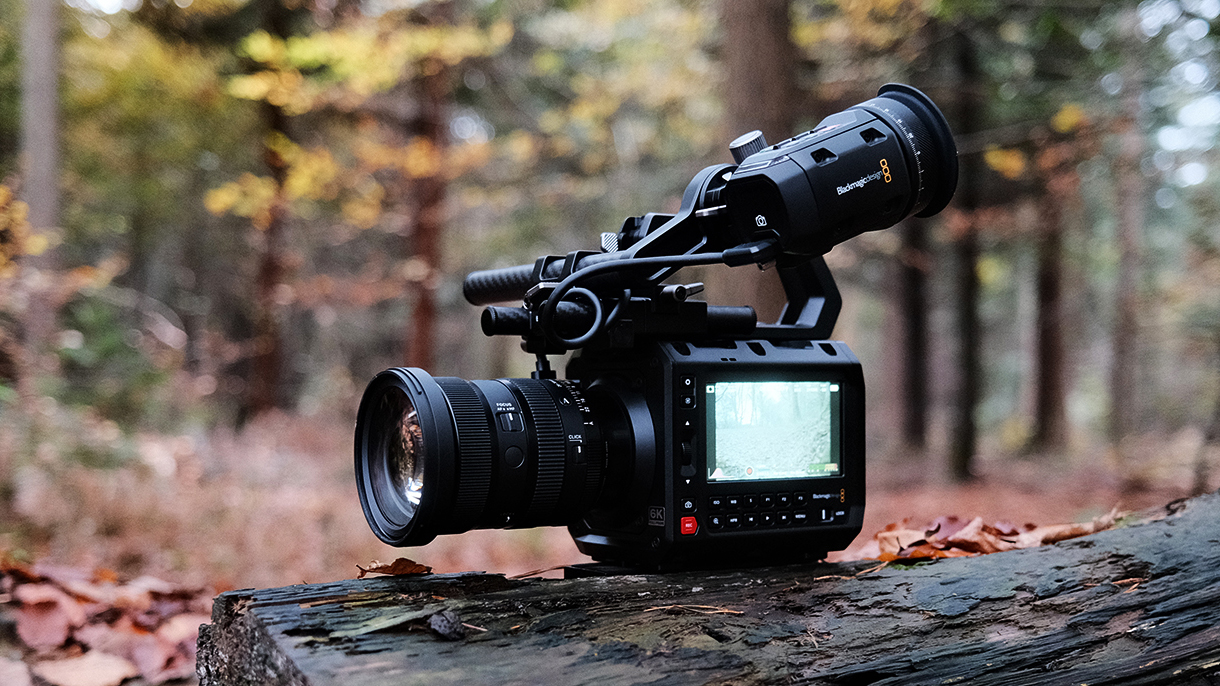
✅ Buy it...
- You need a small package, capable of big results
- You have accessories like monitors and matte boxes already
🚫 Don't buy it...
- You can’t work in Resolve, the Pyxis’ native home.
- In-built autofocus is a must-have.
Alternatives
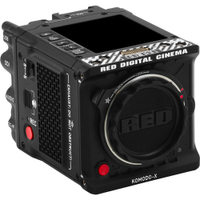
Red’s Komodo X 6K starter kit has recently been reduced in price but is still £8995. It includes batteries and a side handle but no monitor.
Sony’s FX6, the documentary shooter’s favorite, comes with a top handle and monitor.

Rob is Editor of 3D World and ImagineFX magazines and also works as creative director for his own studio, Pariah Studios, producing 3D animations and VFX for a variety of clients. When not at his desk, he can usually be found painting miniatures.
